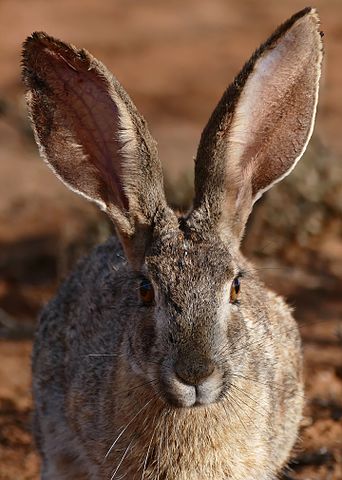Hares are fascinating creatures with unique behaviors and adaptations. Here’s a closer look at the secret lives of hares:
1. Solitary Behavior:
- Hares are typically solitary animals, unlike rabbits, which often live in groups. They are known for their independence and prefer to forage and rest alone.

2. No Burrows:
- Unlike rabbits, hares do not dig burrows. Instead, they create shallow depressions in the ground called “forms” where they rest and give birth to their young.
3. High Reproductive Rate:
- Hares have a remarkable reproductive rate. They can produce multiple litters of leverets (young hares) in a single year, and the leverets are born with their eyes open and are fully furred.
4. Territorial Behavior:
- Hares are known for their territorial behavior. They mark their territories with feces and urine to establish dominance and prevent encounters with other hares.
5. Fast Runners:
- Hares are incredibly fast runners and can reach speeds of up to 45 miles per hour (72 kilometers per hour). This speed is essential for escaping from predators.
6. Nocturnal Activity:
- Hares are primarily nocturnal, meaning they are most active during the night. This behavior helps them avoid daytime predators and reduce their exposure to extreme temperatures.
7. Seasonal Coat Changes:
- Hares undergo seasonal coat changes to blend in with their environment. In the winter, their fur becomes thicker and turns white, providing camouflage in snowy landscapes. In the summer, their fur becomes brown or gray to match the surroundings.
8. Herbivorous Diet:
- Hares are herbivores and primarily feed on plant material, such as grasses, herbs, and woody vegetation. They play a role in controlling plant populations and serve as a food source for predators.
9. Strong Hind Legs:
- Hares have powerful hind legs, which allow them to make impressive leaps and high jumps when escaping from predators. Their long ears also help dissipate excess heat in hot weather.
10. Migratory Behavior:
- Some hare species, like the Arctic hare, exhibit migratory behavior in response to seasonal changes. They move to different elevations or habitats to find food and avoid harsh winter conditions.
11. Camouflage Tactics:
- Hares use their cryptic coloration and freezing behavior to evade detection by predators. When threatened, they often freeze and rely on their ability to blend into their surroundings.
12. Social Agonistic Behavior:
- During the breeding season, male hares may engage in aggressive behaviors to establish dominance and access to females. These interactions can include “boxing” matches between males.
Hares are intriguing animals that have adapted to various environments and developed unique survival strategies. Their secretive and often solitary lives make them a subject of interest for wildlife enthusiasts and researchers, offering a glimpse into the complexities of nature’s diversity.











